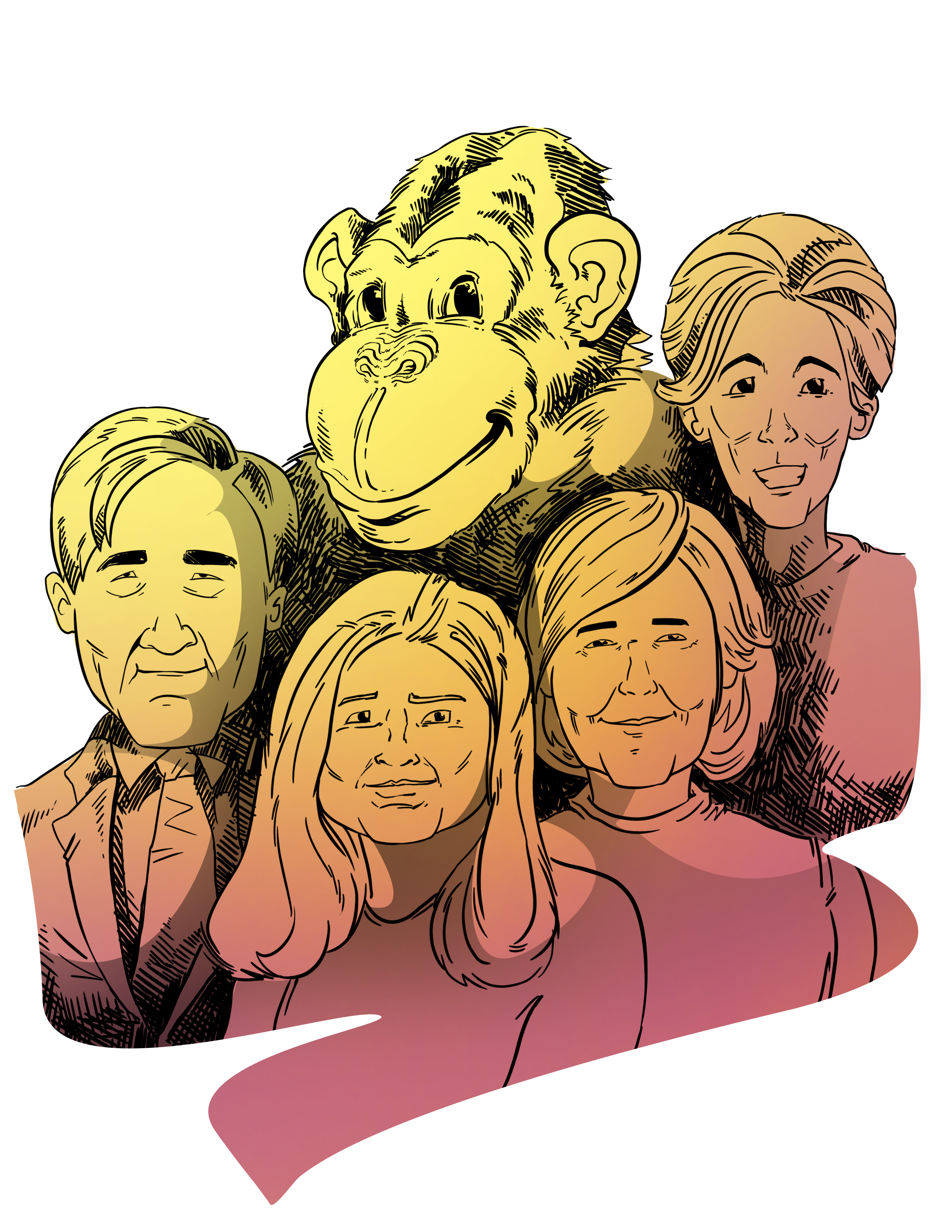In the 1950s and 60s, paleoanthropologist Louis Leakey came up with a master plan to advance the emerging field of primatology. The focus of his research was on human evolution. Leakey’s approach was to study the social interactions of primates. His vision was to hire aides who would travel to the far corners of the world and study some of the largest families of extant apes. Studying the behaviour of apes requires long periods of observation and extensive efforts to become accepted as allies by the apes.
To do this, Leakey decided to hire female scientists. Leakey believed that the temperament and observational skills generally possessed by many women was ideal for this kind of research.
Leakey met and personally appointed the three women who would go on to fulfill this great vision over a period of twelve years. In 1957, he was contacted by a young English woman by the name of Jane Goodall, who had a great passion for wildlife and wished to discuss Leakey’s research with him. Leakey promised to fund her travels to western Tanzania to study the behaviour of chimpanzees. In the field, Goodall quickly became aware of behaviours in chimps never before observed by any scientist. One of her more revolutionary findings was the discovery that chimpanzees make tools for activities such as feeding.
The next woman to join Leakey’s mission was an American occupational therapist named Dian Fossey. Fossey and Leakey met in 1966, at a university lecture. Leakey was seeking a new addition to the team for the study of gorillas in the Congo rainforest. Through her work, Fossey also reported activities and behaviours previously undiscovered in gorillas.
The third and final scientist to join the team encountered Leakey at one of his academic seminars in 1969. She was an anthropology student named Birutė Galdikas. Galdikas was tasked with studying the elusive behaviours of orangutans in the Kalimantan rainforest of Indonesia. Galdikas was instrumental in expanding scientific knowledge on the orangutan’s social interactions, as well as in correcting erroneous observations that existed previous to her time in the field.
Ultimately, this trio of women came to be known as “the Trimates.”
Before their time, primatology was a male-dominated discipline. Soon after Goodall began her studies in primatology, voices from within the field emerged in opposition to her work. Female primatologists were thought of as being incapable of remaining impartial or avoiding emotional attachment to the animals, leading to biased observations. It took these three and many other women decades of diligent work to prove themselves and challenge this sexist rhetoric. Today, the majority of scientists in the field of primatology are women.
Despite being pioneers, the Trimates were by no means immune to scientific controversy.
Not only were their methods heavily criticized, but their motives were often questioned. For instance, Fossey made drastic changes in the later part of her career, shifting from a primarily scientific purpose and taking up strict anti-poaching activism. She was found murdered in 1985, possibly in relation to her activism.
These women faced many other challenges and made many more sacrifices. Together, they served as trailblazers for the primatologists of today. They exposed the human side of primatology, which facilitated the understanding and protection of large apes. The Trimates’ legacy goes well beyond their scientific discoveries; their conservation efforts and love of nature will live on forever.
Editor’s note: A previous version of this article said Dian Fossey was murdered in 1983. Fossey died in 1985. This error was corrected on July 30, 2018.
Graphic by Manoj Thayalan



